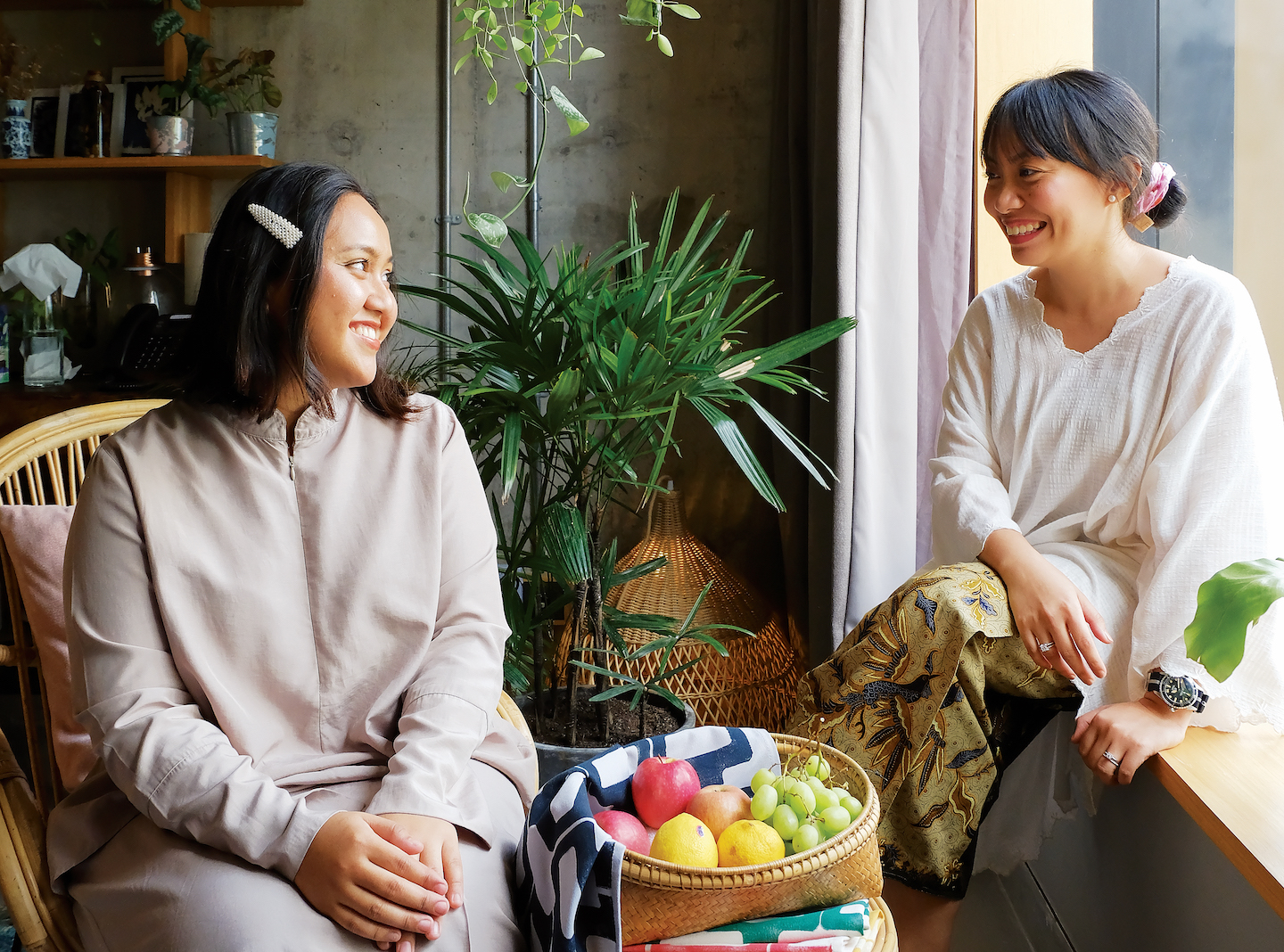
Alyaa Agus (left) and Liyana Zamzuri are passionate about creating and promoting the art of hand block printing (All photos: Lea Creative Designs)
Block printing, or relief printing, is an ancient technique whereby designs are carved onto wood or rubber blocks which are then dipped in ink and stamped on fabric. While a version of this process is used locally for batik (batik cap), block printing is not as familiar in Malaysia.
The start of Alyaa Agus’ love for block prints began quite by accident. “I actually stumbled across this YouTube channel called ‘Hand block printing at home’. I thought it looked like fun, [so] I tried it at home, and I just loved it,” she says.
Alyaa, who has a background in fashion, decided to sell handmade pouches of different sizes with her own hand block prints in May last year. Although there was a lockdown, her products sold very well on Instagram. “At that point, I thought, I need a partner, someone I’m familiar and comfortable with. I used to work with Liyana at a fashion brand. I knew her work ethic and she’s a very talented person, so that’s why I asked her to join me,” Alyaa explains.
Liyana Zamzuri, who was previously in PR and marketing, agreed to sort out the communications aspect of their new business while Alyaa focused on creation and production. Their brand — named Lea, a combination of their names — aims to create beautiful and contemporary block print fabrics, which they use to make a range of items such as pouches, tote bags, scrunchies and tea towels.
With a business birthed during lockdown, one of their main challenges is sourcing. “Getting the materials is hard because we get everything locally, from our fabric to our ink. It is hard to go out and get things because of the lockdown. For example, for the fabric, I need to touch and feel it,” Alyaa says, adding that only natural fibres are suitable for hand block prints as they absorb the colourful inks well.
As Lea is an Instagram-based brand, it relies heavily on online marketing. “Social media has been a powerful tool especially for us during this pandemic in terms of how we stay afloat through to being relevant,” explains Liyana. “There was a lot of trial and error, but I think we have learnt a lot throughout this process. We now know what our demographic is like and are able to produce content that caters for, but is not limited to, our audience.”
Still the partners found that selling their products in person was very effective. “We went to a couple of markets last year when things were more relaxed. It was a lot nicer to be out there having that physical interaction, and people got to see and feel our products. As pretty as photos are, many can’t really relate to a product until they feel it,” says Liyana. Getting to interact with customers at bazaars and pop-ups also allowed the pair to get instant feedback on their items.
Lea’s focus is on the hand block prints themselves, and Alyaa enjoys transforming familiar and traditional motifs into something modern. “We want to make [hand block] more acceptable to youngsters. With batik, we always see the same designs and colours, and to some people, it looks very old school or boring. For Lea, we wanted to use familiar motifs and make them modern so that society can relate to our brand,” explains Alyaa.
For instance, the recent Anyam collection features a print inspired by traditional mats, or tikar. The Anyam multipurpose tea towels come in a variety of colours, and to boost sales for Hari Raya Haji, Lea released numerous sets that were perfect as gifts for the season. Other than the tea towels, the sets included items such as coasters and postcards.
anyam_6.jpg

As her production space is limited and Alyaa makes everything herself — from designing and printing to cutting and stitching — the items are produced in small numbers. For smaller pieces like scrunchies, Alyaa makes 100 per design, block printing is not mainstream in the arts community. We are familiar with batik, but not hand block. As far as I know, in the arts sphere, we are the only ones doing block printing and producing everything manually,” says Liyana.
Although block print fabrics are not common in Malaysia, Alyaa notes that block printing is a technique we often learn as children. Back then, designs were carved onto potatoes and other vegetables before being dipped into paint and splotching them onto paper. While professional block printing uses a similar process, the tools are far more sophisticated. “We want to go to the East Coast and learn more about block printing from professional artisans. Right now, I am doing it at home using lino blocks or rubber blocks, so I would love to learn from artisans who carve designs on wood,” explains Alyaa.
While Lea’s prints are done predominantly on fabric, it has also released a postcard series to experiment with more intricate designs. The partners hope to continue experimenting, keeping their focus on the art of hand block printing. Lea’s next collection is set to come out in September, which Alya reveals was inspired by her cat.
This article first appeared on Aug 23, 2021 in The Edge Malaysia.


